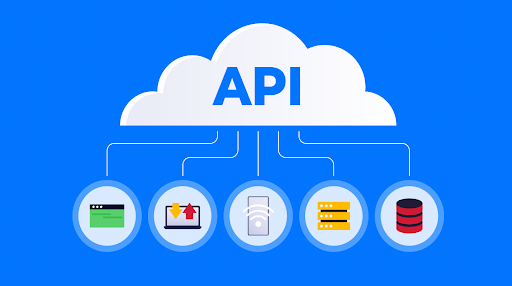APIs for Beginners: How to use an API? A Complete Guide
If you’re new to the world of programming and development, you may be wondering what an API is and how you can use it. In this blog post, we’ll give you a complete guide to APIs for beginners, so that you can start using them in your own projects. An API (Application Programming Interface) is a set of rules and protocols that allows two pieces of software to communicate with each other. In other words, it’s a way for different programs to talk to each other. In this blog post, we’ll cover the following topics: – What is an API? – How do APIs work? – How can I use an API? – What are some common API standards? – What are some popular APIs?
What is an API?
An API (Application Programming Interface) is a tool that helps you interact with other software. It allows two pieces of software to “talk” to each other and exchange data.
For example, when you use a mobile app to book a hotel room, the app will likely use an API to communicate with the hotel’s reservation system. The API will take your request (for a specific room type, number of nights, etc.), send it to the right place in the reservation system, and then return the available rooms that match your request.
In this way, APIs make it possible for different pieces of software to work together and share data. They are an essential part of how many modern applications are built.
How to use an API
An API is a set of programming instructions that allow software to interact with other software. In order for two pieces of software to communicate, they must both be able to speak the same language. The API acts as a translator between the two pieces of software, allowing them to understand each other and exchange data.
In order to use an API, you will need to know the URL of the API and the specific instructions, or methods, that you want to use. The API documentation will list all of the available methods and their parameters. Once you know which method you want to use, you can make a request to the API using that method.
API requests are made using HTTP, just like normal web requests. You can use any programming language that can make HTTP requests in order to access an API. There are also many libraries available that make it easy to work with APIs in your chosen language.
Types of APIs
There are two sorts of APIs: public and private. Public APIs are open to everyone and anyone can use them. Private APIs are only for authorized users, and you need to have a key to access them. You can think of public APIs like a restaurant menu, while private APIs are more like a recipe.
Public APIs are the most common type of API. They usually don’t require any authentication or authorization to use them. All you need is the URL of the API and you can start making requests. The most popular public API is probably the GitHub API, which allows developers to get information about GitHub users and repositories.
Private APIs are less common than public APIs, but they are still used by many companies. A private API usually requires some kind of authentication or authorization to use it. For example, the Google Maps API is a private API that requires you to sign up for an account and get an API key before you can make requests.
Both public and private APIs have their own benefits and drawbacks. Public APIs are easy to use but they might not have all the features that you need. Private APIs usually have more features but they can be harder to use because you need to get an account and an API key first.
Pros and Cons of using an API
An API, or Application Programming Interface, is a set of tools and protocols that allow software developers to interact with an application or service. APIs can be used to access data from a database, to create new features or functionality in an application, or to automate tasks.
There are many advantages to using an API. APIs can provide increased flexibility and reusability of code, as well as allow developers to build applications that are not tied to a specific platform or vendor. In addition, APIs can offer better performance and scalability than traditional approaches to integration.
However, there are also some disadvantages to using an API. For example, APIs can be complex and difficult to understand and use. In addition, they may be less reliable than other methods of integration, such as point-to-point integration.
Why use an API?
An API, or application programming interface, is a set of tools and protocols used by developers to create software and applications. An API defines how software components should interact and makes it easy for developers to use and reuse code.
Using an API can save time and money by eliminating the need to write code from scratch or hire expensive developers. APIs also allow businesses to tap into new markets and expand their reach.
There are many reasons to use an API. Here are just a few:
- To save time and money
- To expand your reach
- To tap into new markets
How to find the right API for your needs
When you’re looking for an API, there are a few things to keep in mind. First, what programming language are you using? Second, what platform are you on? Third, what do you need the API to do?
Once you know the answers to those questions, finding the right API is a matter of searching the internet and trying out a few until you find one that suits your needs. There are many repositories of open source APIs, such as GitHub, and many companies offer commercial APIs as well.
Once you’ve found an API that looks promising, the next step is to read the documentation and try it out. Most APIs will have some kind of getting started guide that will walk you through making your first call to the API. This is usually a good place to start to get a feel for how the API works and whether or not it will suit your needs.
The Different Types of APIs
An API, or application programming interface, is a set of tools that allows two applications to communicate with each other. An API can be used to allow two different pieces of software to share data, or to allow one piece of software to access another application’s functionality.
There are many different types of APIs, but some common examples include web Scraping APIs, library APIs, and operating system APIs.
Web APIs are interfaces that allow applications to interact with web services. Web services are usually hosted on a web server, and they can provide data or functionality that can be accessed by other applications.
Library APIs are interfaces that allow programs to access the functionality of a library. For example, the Java API allows Java programs to access the functionality of the Java libraries.
Operating system APIs are interfaces that allow programs to interact with the operating system. For example, the Windows API allows programs to interact with the Windows operating system.
How to Use an API
An API, or Application Programming Interface, is a set of tools that allows different software platforms to communicate with each other. In the context of web development, an API can be thought of as a set of rules that govern how two applications can talk to each other.
When you use an API, you are essentially making a request to another application for data or functionality. The other application then processes your request and returns the appropriate response.
API requests are made via HTTP, which is the same protocol that is used to load web pages in your browser. However, instead of requesting HTML documents like a web browser does, your application will request data in a format that it can understand (usually JSON or XML).
Most APIs require some sort of authentication in order to prevent malicious users from abuse. For example, the GitHub API requires you to pass your username and password with each request in order to verify that you are authorized to access the data.
In order to use an API, you will need some way to make HTTP requests from your application. This can be done using a library or framework specific to your programming language (e.g., Requests for Python) or by using a generic HTTP client (e.g., cURL).
Once you have chosen a method for making HTTP requests, you can begin exploring the API documentation to learn about APIs (URLs that provide access to specific resources) and what parameters are required for each request.
Useful APIs for Beginners
When it comes to APIs, there are a lot of different options available. However, not all APIs are created equal. Some APIs are much more user-friendly than others. In this article, we will be taking a look at some of the most useful APIs for beginners.
- One of the most useful APIs for beginners is the Google Maps API. The Google Maps API allows developers to integrate Google Maps into their websites and applications. This can be extremely helpful for users who are looking for directions or trying to find a specific location.
- Another great API for beginners is the Facebook API. The Facebook API allows developers to integrate Facebook into their websites and applications. This can be extremely helpful for users who want to connect with their friends on Facebook or share information with them.
- The Twitter API is also a great option for beginners. The Twitter API allows developers to integrate Twitter into their websites and applications. This can be extremely helpful for users who want to share information with their followers or connect with other Twitter users.
Alternatives to Using an API
One alternative to using an API is screen scraping. Screen scraping involves extracting data from a website by parsing the HTML code. This method is typically used when there is no officially supported API for the website. Another alternative to using an API is web automation. Web automation involves simulating user input on a website using a tool such as Selenium. This can be used to automate tasks on a website or to scrape data that is not possible to scrape with screen scraping alone.
What are some popular APIs?
There are a number of popular APIs that are commonly used by developers. Some of the more popular ones include:
- -The Twitter API
- -The Facebook API
- -The Google Maps API
- -The Instagram API
Each of these APIs provides developers with a way to access the specific data or functionality of the corresponding service. For example, the Twitter API allows developers to interact with the Twitter platform, while the Google Maps API lets them integrate mapping features into their applications.
Conclusion
In this article, we have looked at what an API is and how it works. We’ve also seen how to use an API, by making a request to the server for data. Finally, we’ve parsed the response from the server so that we can extract the information that we need. By following these steps, you should be able to use any API that you come across.




